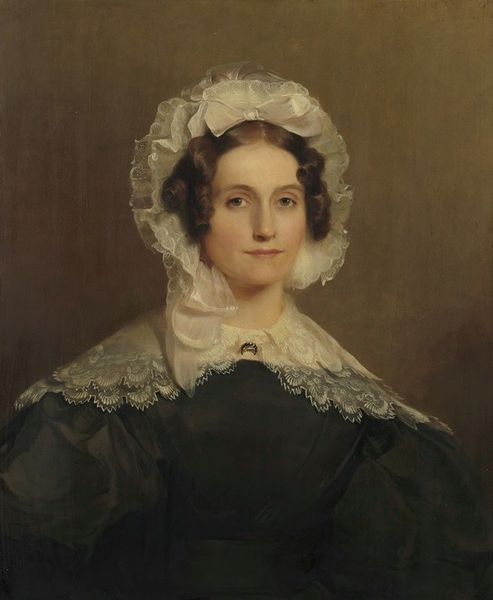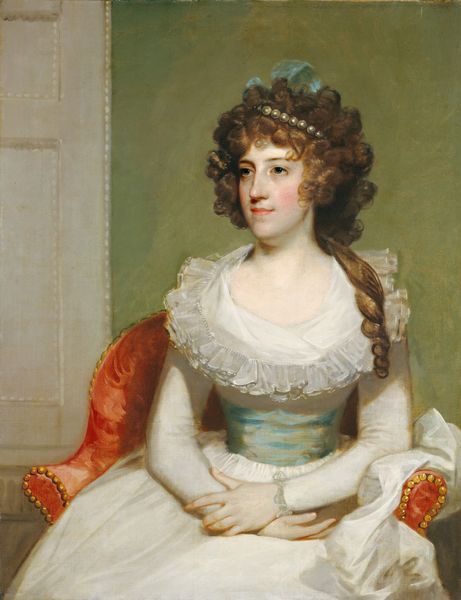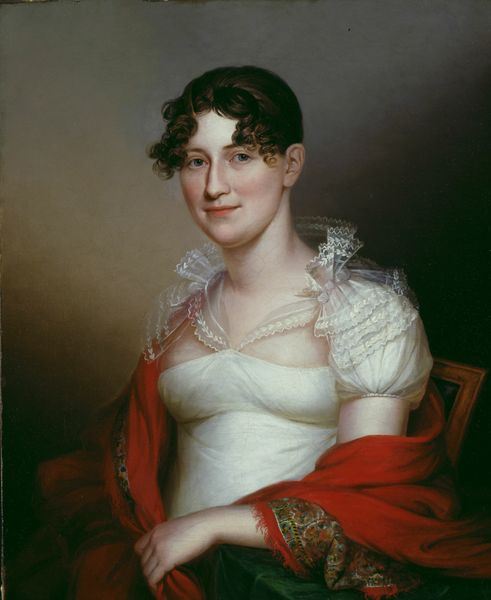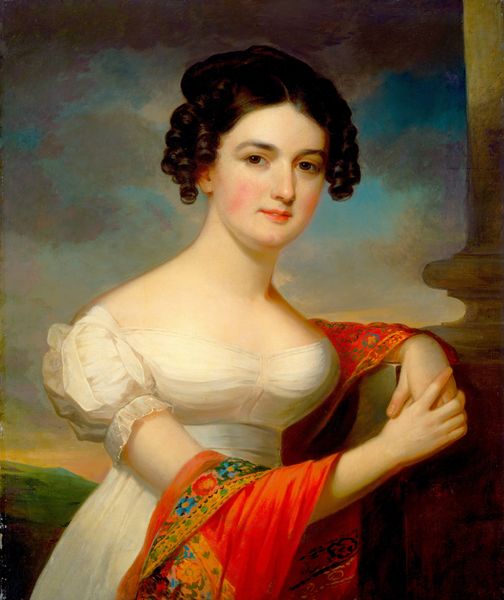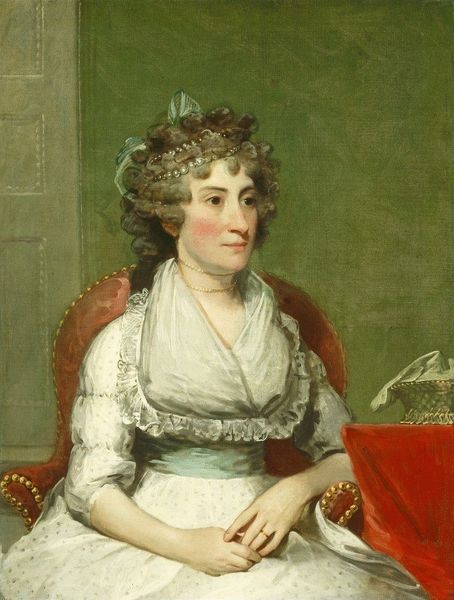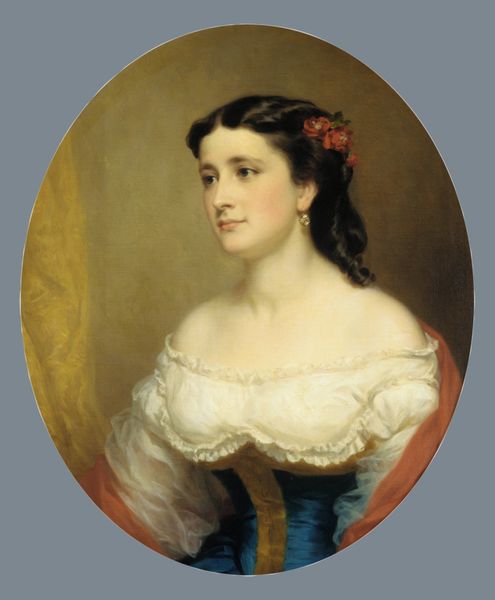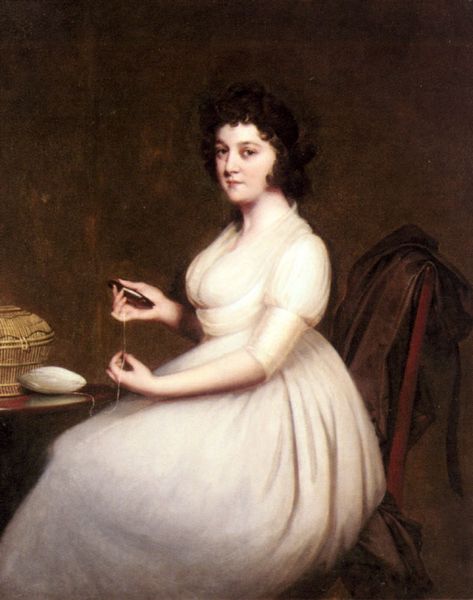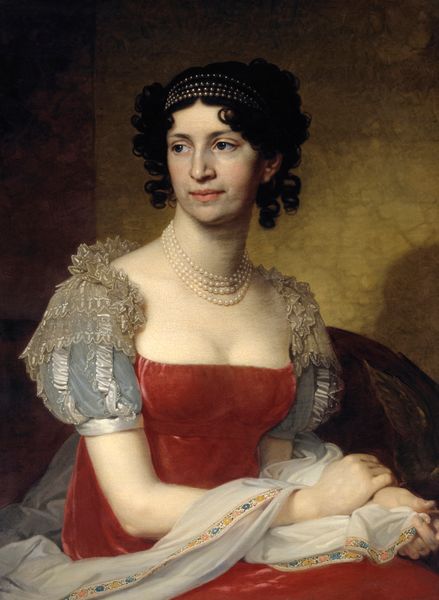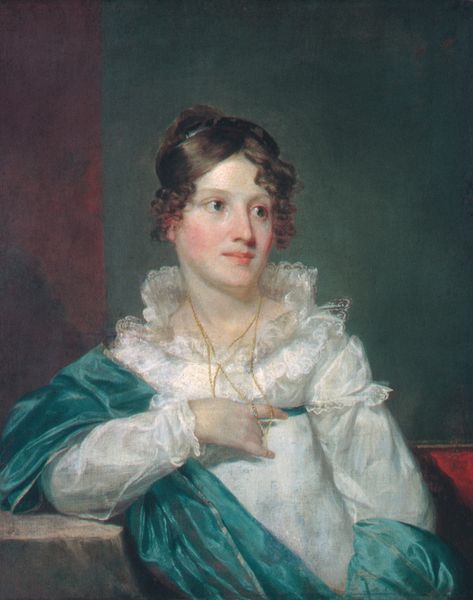
painting, oil-paint
#
portrait
#
neoclacissism
#
painting
#
oil-paint
#
figuration
#
classicism
#
history-painting
#
academic-art
Dimensions: overall: 76.2 x 61 cm (30 x 24 in.) framed: 95.6 x 81 x 7 cm (37 5/8 x 31 7/8 x 2 3/4 in.)
Copyright: National Gallery of Art: CC0 1.0
Curator: We're now looking at John Vanderlyn’s oil painting, "Mary Ellis Bell (Mrs. Isaac Bell)", created around 1827. Editor: It’s remarkable how Vanderlyn captured a sense of reserved elegance. The creamy hues and smooth brushstrokes create such a placid atmosphere. Curator: Vanderlyn was quite established at this point. Commissioned portraits were bread and butter for artists, providing financial stability, especially within burgeoning mercantile elites such as the Bells. This portrait signifies Mrs. Bell’s position in society. Editor: Note the reflected profile—an ingenious doubling. What do you make of the classical setting for a woman of the American South? Curator: The Neoclassical style was incredibly fashionable and useful in framing elites; a way to link themselves with the virtues of the ancient Republic. Her almost Grecian gown, high-waisted, adds to the timelessness Vanderlyn wanted to achieve. We mustn't forget, too, the complex social dynamics at play: Isaac Bell, her husband, profited as a cotton broker, indirectly off the slavery system. These beautiful artworks often veil unsettling realities. Editor: Indeed. Looking closer at the surface, the gentle modulation of light across her face and the folds of the dress demonstrate great technical skill, regardless of its societal function. See how the flower at her waist draws the eye. Curator: These are powerful statements made by this artwork of Vanderlyn at the time. How did patronage reinforce hierarchies? These portraits memorialize particular individuals within a system of social inequality. Editor: It’s easy to become lost in the elegance and forget these complexities. But returning to the formal qualities I am left with an admiration for Vanderlyn's artistic skills Curator: And I will carry with me a more complex and contextualized understanding.
Comments
No comments
Be the first to comment and join the conversation on the ultimate creative platform.

